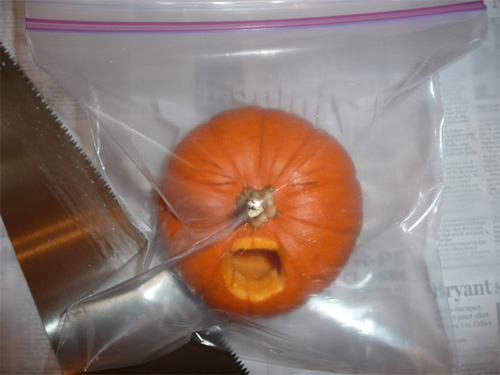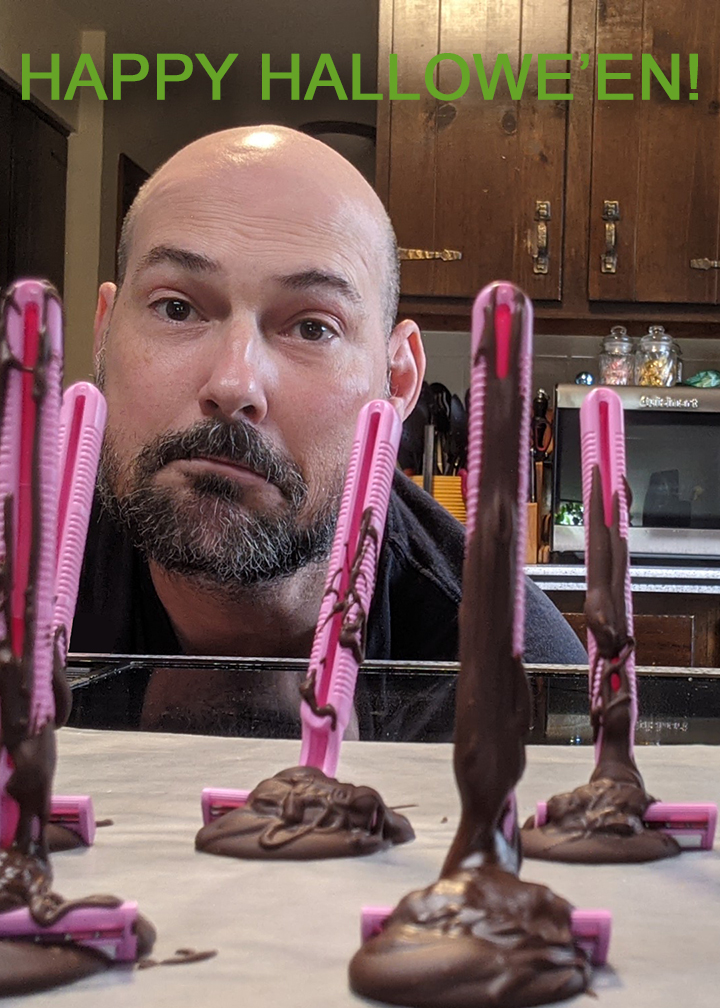
Tag: halloween
Happy Hallowe’en 2016!
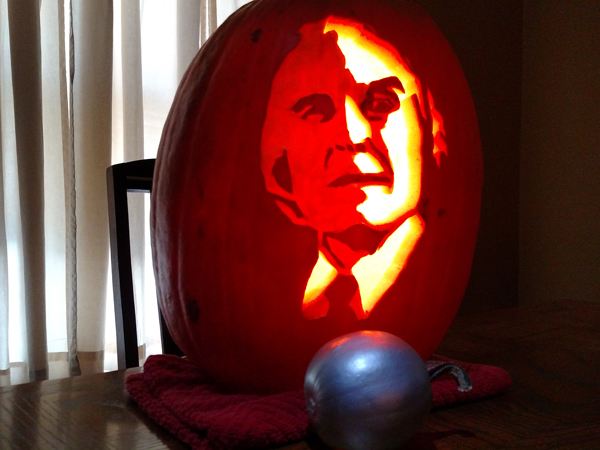
Angus Scrimm
1926-2016
Happy Hallowe’en 2014!

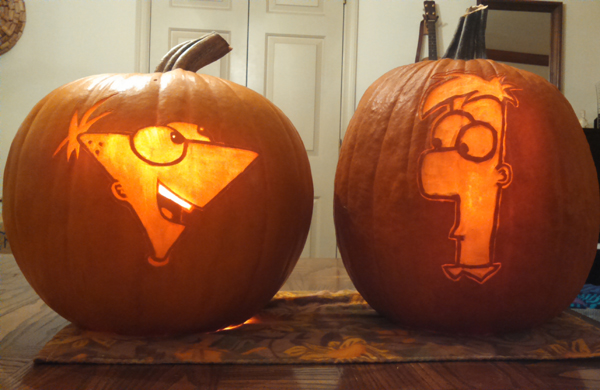
Happy Hallowe’en 2012

Happy Hallowe’en 2011
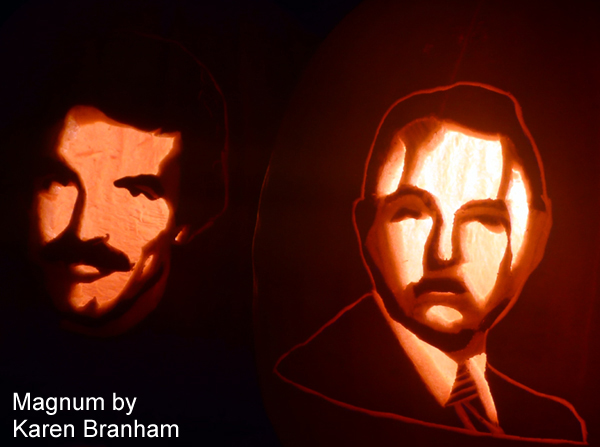
Yay Hallowe’en!
For those unaware, I love Hallowe’en. It appeals to my love of play and reinvention, and there’s candy. I carve a pumpkin every year, and sometimes I’m lucky enough to have a conspirator. So, without further ado, I present Boris Karloff’s Frankenstein’s Monster and Boris Karloff’s Frankenstein’s Monster’s Monkey.
Why Must I Make Wholesome Activities Disturbing?
I love Hallowe’en.
Happy Hallowe’en!
I have very happy memories of Hallowe’en as a kid. There was the time my brother Ian dressed as George Washington, with a white wig composed of rolls of surgical cotton (it rained that night, with predictable results). Mom always used to bake these jack-o-lantern decorated ground beef, velveeta cheese, english muffin thingos. Mom was also very handy with a sewing machine, so I got to wear cool skeleton costumes and such. We lived in a big, hilly neighborhood with lots of kids, so you could score some serious loot trick-or-treating, if you had the endurance.
I was born in 1971 so, when the Tylenol poisonings occurred in 1982, my best trick-or-treating years were already behind me. According to Barbara Mikkelson over at snopes.com that was the year when, on a large scale, fear won out over common sense. Sure, stories had already been around for decades about apples with razor blades in them, and poisoned candy. One parent deliberately poisoned his child, then blamed it on candy acquired trick-or-treating. In another case, a kid died after eating his uncle’s heroin, and the family tried to cover it up by sprinkling some heroin on the child’s Hallowe’en candy. Each of these, while tragic, turned out not to be the work of a malicious stranger, but a family member. Hoaxes.
With the vast majority of the other 90 or so incidents reported in the last 50 year, it was determined that the children had tampered with their own candy, then presented it to their parents. Whether done as a prank or for attention, these incidents are also hoaxes. Over the same period, there have been a handful of actual cases where someone put pins or needles in Hallowe’en candy and then gave it away. The most significant injury sustained required a couple of stitches.
So, the chances of your kid coming to harm from candy that a random madman has tampered with is virtually non-existent. The probability of a child getting hit by some idiot in a Suburban on Hallowe’en night is far, far greater. Yet, tonight, thousands of parents will go to their area hospital or sheriff’s office and have their kids’ candy x-rayed. It’s natural for parents to be protective of their kids, but this is an example of people being lousy at understanding threat vs. risk, then responding appropriately. Bruce Schneier writes about this kind of assessment in Beyond Fear.
In our example, candy which has been tampered with is the threat. The impact of the threat if it occurs ranges from minor (needle) to deadly (poison). The risk (probability) of the threat occurring is very, very low. The response to the threat is to x-ray the candy. The cost of this response is $0 to the parent, but offers no security against the part of the threat with the greatest impact, i.e., an x-ray will reveal glass or metal but not poison.
The big downside is that we’re teaching kids to be lousy threat/risk assessers, too. I’m happy that I was a kid when I was. In addition to treating today’s children like criminals (zero-tolerance policies, metal detectors, locker searches), we’re teaching them to be afraid for no good reason.

